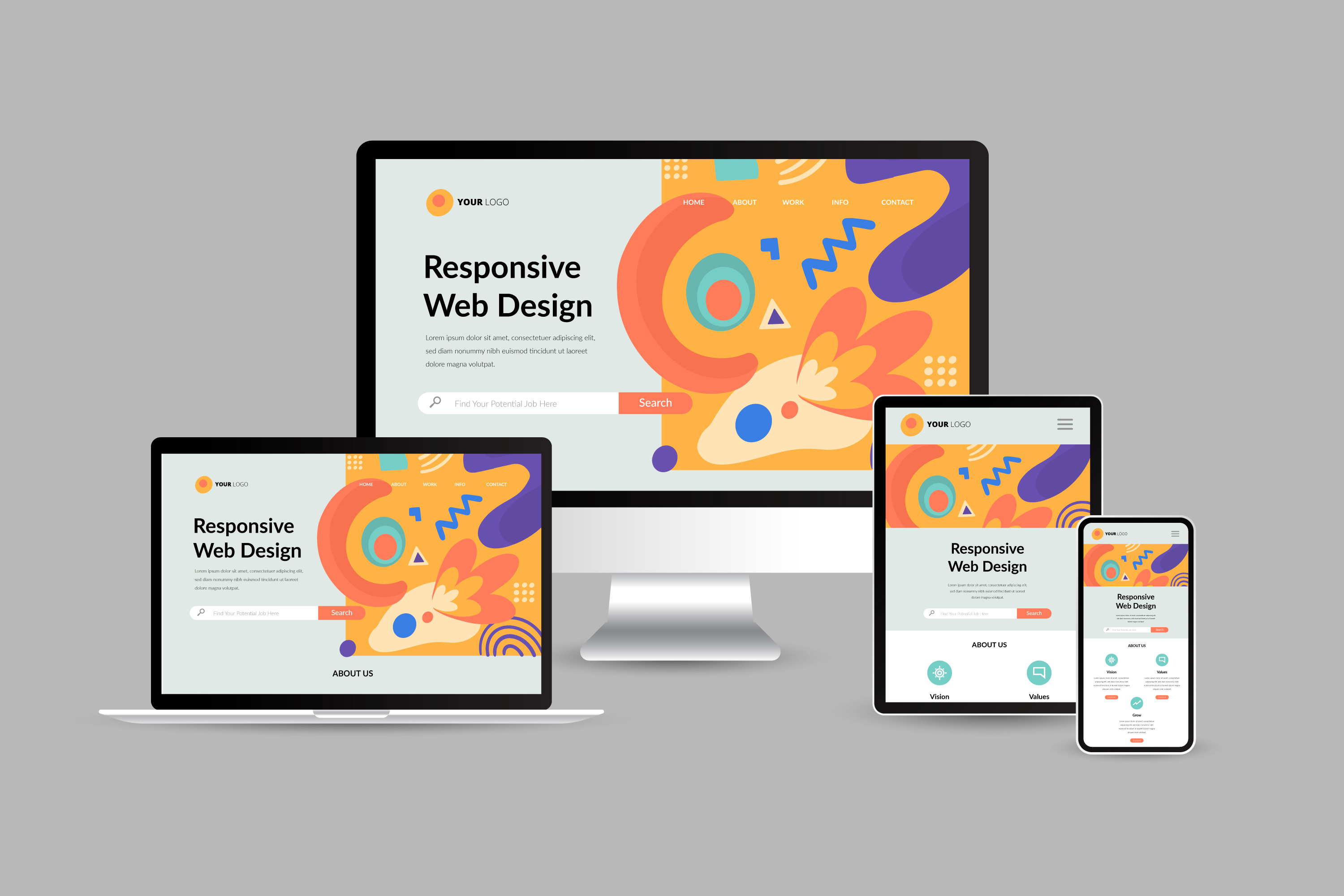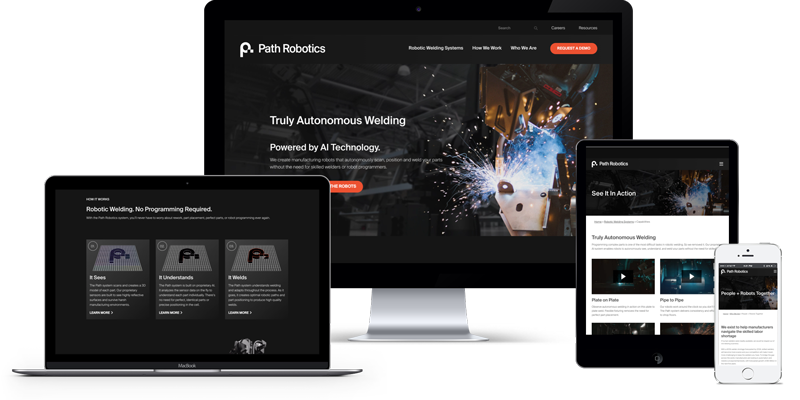Future-Proof Your Business with Innovative Website Design Trends
Future-Proof Your Business with Innovative Website Design Trends
Blog Article
Make Best Use Of Engagement: Proven Techniques for Impressive Site Layout
In a progressively digital landscape, the significance of a user-centric strategy to internet site layout can not be overemphasized. Understanding how reliable navigating, aesthetic hierarchy, and web content optimization assemble to enhance user involvement is important for any type of organization seeking to make a significant effect. As we explore numerous tried and tested methods that add to impressive site style, the interplay between these components reveals not just ideal techniques however likewise cutting-edge techniques that can boost individual experience. What may surprise you is how straightforward adjustments can bring about impressive transformations in interaction metrics.
Significance of User-Centric Design
User-centric layout is essential in developing reliable websites, as it prioritizes the needs and choices of completion user from the actual beginning of the style process (website design). This strategy makes sure that the internet site is customized to offer an optimum experience for individuals, facilitating involvement and fulfillment. By understanding user actions, goals, and discomfort points, developers can develop interfaces that resonate with their target audience and foster a sense of connection
Carrying out user-centric layout involves comprehensive research, consisting of user identities and trip mapping, which help in recognizing the details requirements of different user sectors. This data-driven approach enables educated choices concerning web content, functionality, and format, ultimately causing the production of a much more intuitive and appealing web experience.
In a competitive digital landscape, focusing on user-centric layout is not simply helpful; it is crucial for driving involvement, minimizing bounce rates, and cultivating individual loyalty. Efficient sites are those that reverberate with customers, making user-centric design a fundamental principle for successful internet growth.
Effective Navigation Approaches
A well-structured navigating system is a cornerstone of reliable web site design, constructing directly on the concepts of user-centric design. Efficient navigation permits customers to locate info swiftly and without effort, enhancing their overall experience and motivating longer sees.
To attain this, take into consideration applying a clear pecking order in your navigation food selection. Main groups should be right away visible, while subcategories can be disclosed via dropdowns or expandable menus. This company assists individuals anticipate where they may find pertinent content, lowering irritation.

Uniformity is essential; use familiar terms and style aspects throughout the site to avoid complication. Breadcrumb tracks can additionally be helpful, offering customers with contextual recognition of their area within the website and making it possible for easy backtracking.
Lastly, make certain that your navigation is mobile-friendly and responsive. As even more individuals gain access to internet sites through smart phones, adapting your navigation for smaller displays is necessary for preserving functionality and ease of access. By focusing on these strategies, you can produce a seamless navigating experience that keeps individuals involved.
Visual Pecking Order and Format
Establishing a clear visual hierarchy is crucial for leading individuals through a web site's material effectively. A well-structured layout not only enhances customer experience yet likewise affects how visitors communicate and perceive with info. By tactically using dimension, spacing, contrast, and shade, designers can create centerpieces that accentuate one of the most important elements, such as headlines, phones call to activity, or pictures.
Incorporating a grid system can additionally improve visual hierarchy by offering a consistent framework for web content placement. This organization allows customers to browse the site intuitively, making it easier to digest info (website design). you could look here Furthermore, making use of whitespace is vital; it creates breathing room around aspects, decreasing cognitive overload and stressing vital content

Material Optimization Strategies
While developing visually appealing layouts is essential, the efficiency of a website inevitably depends upon how well its material is optimized for both search engines and individual engagement. Web content optimization includes a calculated technique that improves presence and significance, eventually driving website traffic and retaining site visitors.
First, keyword research is essential. Identifying appropriate key words that line up with individual intent enables the integration of these terms normally into headings, text, and meta summaries. This not just helps in ranking greater on internet search engine but also improves the clearness of content for users.

Additionally, maximizing for neighborhood search engine optimization can increase interaction for region-specific audiences. Integrating localized key phrases and producing material that addresses regional rate of interests boosts importance.
Finally, regularly updating material ensures that it stays valuable and fresh, appealing to both search engines and returning individuals. By concentrating on these material optimization methods, services can create a compelling online visibility that cultivates interaction and drives conversions.
Receptive and Mobile-First Approaches
User interaction and web content presence are progressively affected by the capability of a web site to adapt flawlessly throughout numerous devices. With the increase of helpful site mobile surfing, using receptive style and mobile-first approaches has come to be necessary for reliable internet advancement. Receptive layout makes sure that a single internet site layout changes fluidly to various display dimensions, from desktops to mobile phones, consequently providing you could try these out a constant individual experience.
On the other hand, a mobile-first method prioritizes the mobile user experience during the style process. By designing for smaller sized displays originally, developers can concentrate on necessary functions and boost performance, making sure that users are not overwhelmed by unneeded content. This approach likewise enhances packing times, which is crucial for retaining site visitors.
Both methods add to greater interaction rates, as individuals are a lot more most likely to communicate with a site that is visually enticing and easy to use. Search engines prefer mobile-optimized websites in positions, therefore boosting exposure. In summary, adopting receptive and mobile-first style strategies is essential for taking full advantage of user engagement and guaranteeing that material stays easily accessible and reliable across all devices.
Final Thought
Reliable navigating strategies, a distinct visual pecking order, and optimization of web content substantially improve user experience. Collectively, these strategies not only assist in details access however also foster deeper individual interaction, ultimately contributing to higher engagement prices and total web site success.
As we explore numerous tested techniques that add to impressive website layout, the interaction between these elements exposes not just best techniques however also ingenious strategies that can raise user experience.User-centric design is important in developing efficient websites, as it focuses on the needs and choices of the end customer from the actual beginning of the design procedure. Effective websites are those that resonate with individuals, making user-centric layout an essential principle for effective internet development.
Receptive design makes sure that a solitary internet site design readjusts fluidly to various screen dimensions, from desktop computers to smartphones, thereby supplying a consistent individual experience.
In summary, adopting mobile-first and receptive style techniques is critical for taking full advantage of user interaction and making sure that web content continues to be easily accessible and reliable throughout all tools.
Report this page